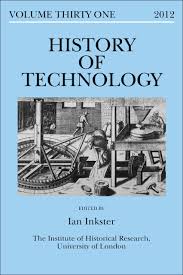Skip to content

History of Technology Prehistoric Era: Early Tools and Fire (~3.3 million years ago – 3000 BCE)
- History of Technology Stone Tools: Early humans created hand axes, scrapers, and spears.
- Control of Fire (~1.5 million years ago): Used for cooking, warmth, and protection.
- Domestication of Plants and Animals (~10,000 BCE): Enabled the transition from hunter-gatherer societies to agriculture.
- Pottery and Weaving: Early forms of manufacturing and storage developed.
History of Technology Bronze and Iron Ages (3000 BCE – 500 BCE)
- Bronze Tools: Alloy of copper and tin, used for tools and weapons.
- The Wheel and Writing (~3500 BCE): Mesopotamian invention enabled transportation and record-keeping.
- Irrigation Systems: Supported early civilizations like Mesopotamia and Egypt.
- Iron Tools (~1200 BCE): Stronger and more durable tools spread in the Iron Age.
Classical and Medieval Periods (500 BCE – 1500 CE)
- Greek and Roman Engineering: Aqueducts, roads, and concrete construction.
- Watermills and Windmills: Early machines to harness renewable energy.
- Paper and Printing (China, 1st-8th centuries): Paper production and block printing improved information dissemination.
- The Mechanical Clock (13th century): Enabled precise time-keeping.
- Gunpowder and Cannons (China, 9th century): Transformed warfare.
Renaissance and Early Modern Era (1500 – 1800 CE)
- Scientific Revolution (16th-17th centuries): Advances in astronomy, physics, and mathematics (e.g., Galileo, Newton).
- The Printing Press (Gutenberg, ~1440): Revolutionized access to knowledge.
- Navigation Technology: Inventions like the compass and astrolabe enabled exploration and trade.
- Steam Engine (1700s): Pioneered by Thomas Newcomen and improved by James Watt, crucial for the Industrial Revolution.
History of Technology Industrial Revolution (1760 – 1840)
- Textile Machinery: The spinning jenny and power loom revolutionized production.
- Factories and Mass Production: Assembly-line manufacturing began to take shape.
- Railways and Steamships: Improved transportation of goods and people.
- Electricity (19th century): Michael Faraday’s work laid the foundation for electric generators.
Second Industrial Revolution (1870 – 1914)
- Steel, Oil, and Chemicals: New materials and energy sources fueled economic growth.
- Telegraph and Telephone: Samuel Morse and Alexander Graham Bell enabled long-distance communication.
- Light Bulb (Thomas Edison, 1879): Extended productive hours.
- Internal Combustion Engine: Led to the development of automobiles and airplanes.
20th Century: The Age of Innovation
- Electronics and Computers (1940s-1950s): Development of semiconductors and computers (ENIAC, 1946).
- Nuclear Power (1945): Harnessing atomic energy, both for war and peace.
- Space Exploration (1960s): The moon landing (1969) marked a new frontier.
- Television and Satellites: Changed communication and entertainment globally.
- The Internet (1960s-1990s): ARPANET’s evolution into the World Wide Web transformed information sharing.
21st Century: The Digital and Information Age
- Smartphones and Mobile Internet: Ubiquitous computing in daily life.
- Artificial Intelligence and Machine Learning: Automated decision-making and personalized technologies.
- Renewable Energy: Solar and wind power challenge fossil fuel dependency.
- Blockchain and Cryptocurrencies: Redefining finance and digital ownership.
- Quantum Computing (Ongoing): Promising to solve complex problems at speeds beyond classical computers.
Emerging Trends and Future Prospects
- Space Colonization: Private companies like SpaceX aim to establish bases on Mars.
- Nanotechnology: Tiny machines with applications in medicine and materials science.
- Biotechnology: CRISPR gene-editing offers new solutions to diseases.
- AI and Automation: Expected to impact jobs and economies significantly.
- Climate Technologies: Innovations to combat global warming and environmental crises.
Scroll to Top

